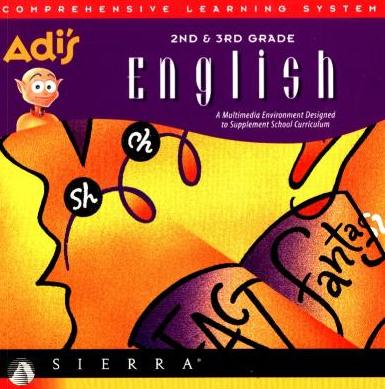Why do games make you happy? The easy answer is that they don’t – anyone who’s ever cursed at the tv screen knows that video games aren’t always, well, fun and games. But video games do trigger the brain’s reward systems, which enhances our engagement, attention, motivation, and, of course, learning.
The primary neurological argument for the effectiveness of video games for learning is based on the role of dopamine in the brain’s reward network. Dopamine is a neuromodulator: a chemical in the brain that facilitates transfer of information between neurons. Dopamine is released upon anticipation of some reward, leading to the activation of norepinephrine, which causes alertness. This means that the anticipation of a reward will lead to increased attention to the potential reward. The continued dopamine activation rate is directly related to the value of the expected reward. If it is as expected, there is no change, but rewards that are better than expected increase dopamine activation, and rewards that are less than expected decrease it. This activation pattern means that people automatically learn the cues that lead up to a reward, because that’s when dopamine activation begins. For example, your brain is being flooded with dopamine as you crack open a can of Coke – before you’ve even taken the first sip.
Researchers have found that playing video games not only increases the amount of dopamine in the brain, but also increases the amount of dopamine being absorbed by dopamine receptors, especially in areas of the brain thought to control reward and learning. This indicates that the brain’s reward networks are highly active while playing video games. Furthermore, they found that the amount of dopamine released while playing a video game is positively correlated with the player’s performance within the game.
In addition to its role in the reward network, dopamine is also necessary for motivation. This is because most motivation comes from a desire to return to rewards we have experienced in the past – we are motivated to open the soda can because we anticipate the sugar within. Dopamine also helps video game players form associations between responses and rewards, which allows them to make choices based on past experiences and regulate their behavior.
Even though the predictability of response and reward increases dopamine levels, games that are wholly predictable are boring. The reason for this is that some uncertainty about the outcome of the game actually increases players’ motivation and engagement as they anticipate the uncertain reward. This is why games of chance are so popular even though players often experience a drop in dopamine after a loss.
Instructional designers hope to harness the brain’s reward systems to create games that encourage students to continue playing and learning without needing unrelated motivators like grades.
Researchers in the field have created a model for this sort of learning environment that they call the Game Cycle. They describe the Game Cycle as “a defining characteristic of computer game play…users are engaged in repetitive play and continually return to the game activity over time.” They postulate that certain characteristics of educational games will trigger a self-reinforcing cycle that will enhance students’ motivation to continue playing. As players make choices within the game, certain actions are rewarded with points, unlocked content, or “leveling up.”
As students play, they are constantly anticipating the potential for rewards within the game. However, some actions lead to bigger rewards than players had anticipated, like beating the “boss” at the end of a level. This difference between the size of the anticipated reward and that of the actual reward is known as “prediction error” and can be thought of as the instance of a “happy surprise.” It is through prediction error that dopamine takes a role in memory formation and learning. In a study on the relationship between midbrain dopaminergic activity and learning, scientists found that prediction error was a significant predictor of recall.
As students experience prediction error, they learn the cues that lead them to rewarding behavior, causing them to anticipate the rewards. This anticipation increases dopamine levels, increasing the motivation to continue playing. Games that are created with educational goals set up the rewards so that students are motivated to iterate and self-correct mistakes so as to maximize rewards. This happens all the time in commercial video games when the player’s character is killed by enemies, leading the player to try different strategies until one is found that leads to success – and reward.
References:
Garris, R., Ahlers, R., & Driskell, J. E. (2002). Games, motivation, and learning: A research and practice model. Simulation Gaming, 33(4), 441-467. doi: 10.1177/1046878102238607
Howard-Jones, P. A., & Demetriou, S. (2009). Uncertainty and engagement with learning games. Instructional Science, 37(6), 519-536. doi:10.1007/s11251-008-9073-6
Howard-Jones, P., Demetriou, S., Bogacz, R., Yoo, J.H., & Leonards, U. (2011). Toward a science of learning games. Mind Brain and Education, 5(1), 33-41. doi: 10.1111/j.1751-228X.2011.01108.x
Koepp, M., Gunn, R., Lawrence, A., Cunningham, V., Dagher, A., Jones, T., . . . Grasby, P. (1998). Evidence for striatal dopamine release during a video game. Nature, 393(6682), 266-268.
Rose, T. (2012, October 9). Reward Networks. Educational Neuroscience. Lecture conducted from the Harvard Graduate School of Education, Cambridge, MA.
Wise, R. (2004). Dopamine, learning and motivation. Nature Reviews Neuroscience, 5(6), 483-494. doi: 10.1038/nrn1406

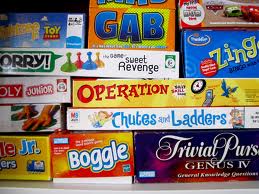
 The first, based on the game of Life (which none of the students had heard of until they began their research) might be considered a traditional board game. The players had currency, which they were able to spend. Then, based on the results of their choices, the players could make further choices. Although the students struggled with how to make it more fun, they acknowledged that it would be a difficult digital game to make enticing as well – it relied heavily on visuals, which they had created on paper, but that alone wasn’t enough to make it engaging.
The first, based on the game of Life (which none of the students had heard of until they began their research) might be considered a traditional board game. The players had currency, which they were able to spend. Then, based on the results of their choices, the players could make further choices. Although the students struggled with how to make it more fun, they acknowledged that it would be a difficult digital game to make enticing as well – it relied heavily on visuals, which they had created on paper, but that alone wasn’t enough to make it engaging.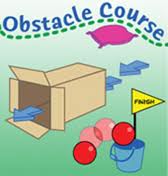 The second game was envisioned as a fast motion casual game. When I asked them to translate it into real life, they made a timed obstacle course, where the player had to pick up items along the way to collect bonus points. It was (as you might expect) great fun, and they were also easily able to make it into an engaging and educational phone game.
The second game was envisioned as a fast motion casual game. When I asked them to translate it into real life, they made a timed obstacle course, where the player had to pick up items along the way to collect bonus points. It was (as you might expect) great fun, and they were also easily able to make it into an engaging and educational phone game. “You wouldn’t have believed me. You had to learn it for yourself!” So says Glinda the Good Witch, at the end of the Wizard of Oz (belated spoiler alert for anyone who never had a childhood).
“You wouldn’t have believed me. You had to learn it for yourself!” So says Glinda the Good Witch, at the end of the Wizard of Oz (belated spoiler alert for anyone who never had a childhood).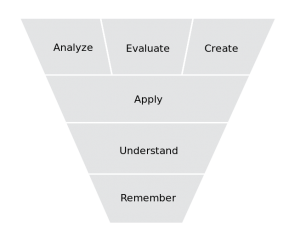 At the lowest level is Memorization, or the abiliy to merely parrot back a concept. If a student learns that the question “Which fraction represents 50%?” should be answered with “1/2,” then the student is unlikely to remember the information longterm, and even if the information stays, the student will be unlikely to be able to use the information well.
At the lowest level is Memorization, or the abiliy to merely parrot back a concept. If a student learns that the question “Which fraction represents 50%?” should be answered with “1/2,” then the student is unlikely to remember the information longterm, and even if the information stays, the student will be unlikely to be able to use the information well. Few classrooms have musical instruments, architectural firms, and baking supplies at the ready. But every classroom has a large number of students, and students can teach one another.
Few classrooms have musical instruments, architectural firms, and baking supplies at the ready. But every classroom has a large number of students, and students can teach one another.


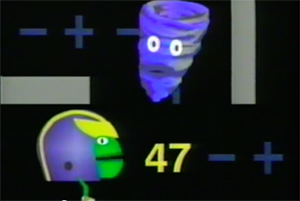



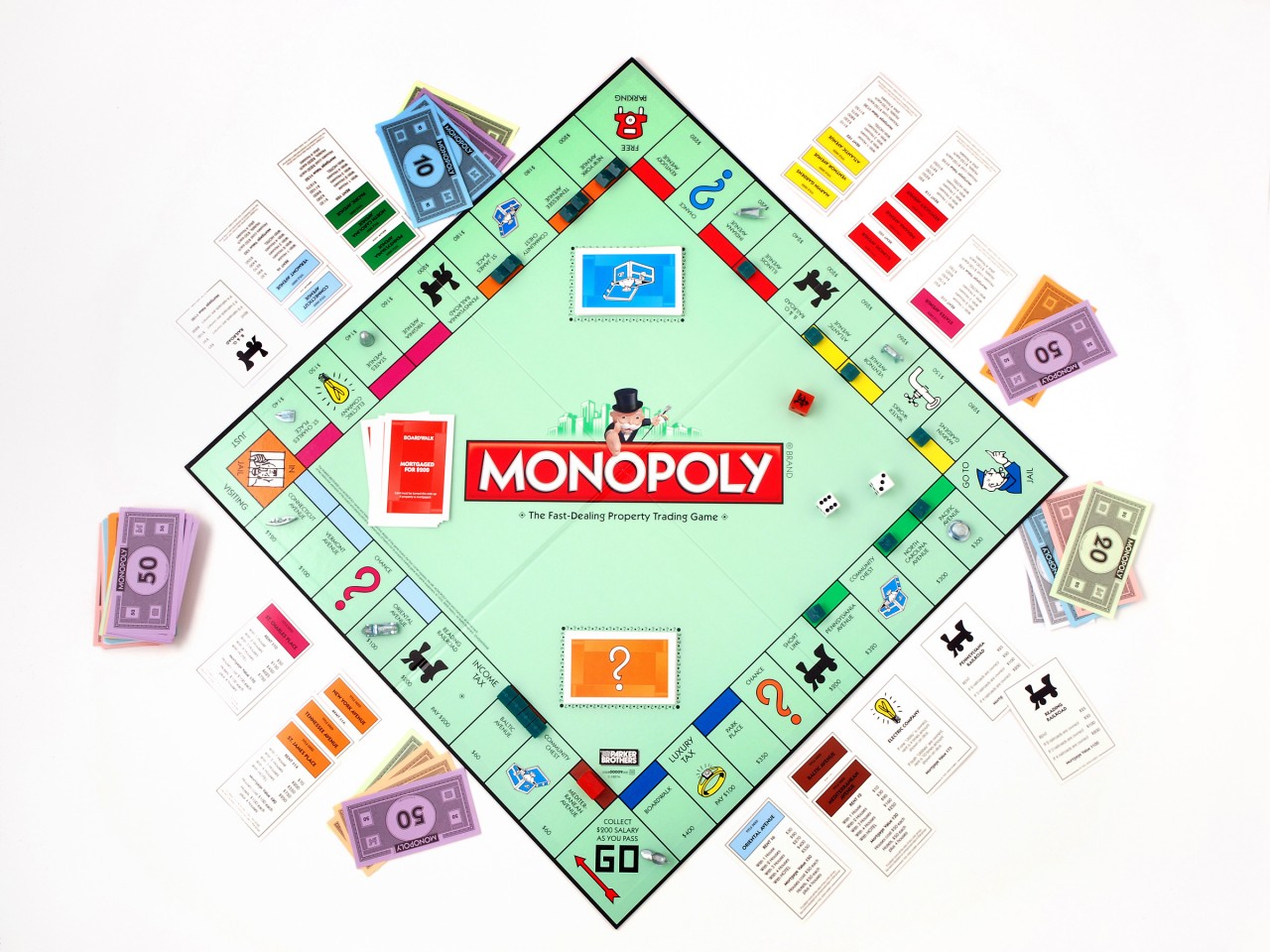
 In addition to making the information useful to players, games also ask them to make decisions based on that information. Remember my question about green vs. orange properties in Monopoly? Not only did you have to recall the relative values of each property, but you also had to assign meaning to that information to make a well-informed decision – and good decisions are the only way to win! These sorts of decisions ask players to move higher on
In addition to making the information useful to players, games also ask them to make decisions based on that information. Remember my question about green vs. orange properties in Monopoly? Not only did you have to recall the relative values of each property, but you also had to assign meaning to that information to make a well-informed decision – and good decisions are the only way to win! These sorts of decisions ask players to move higher on 